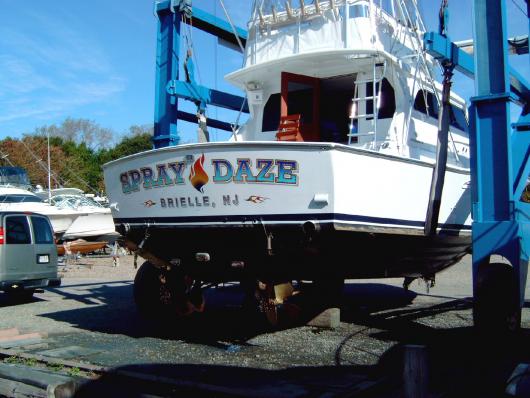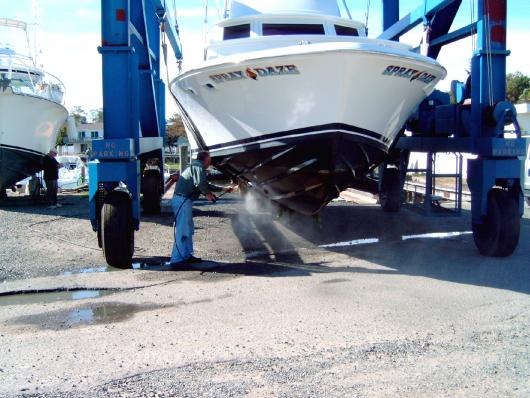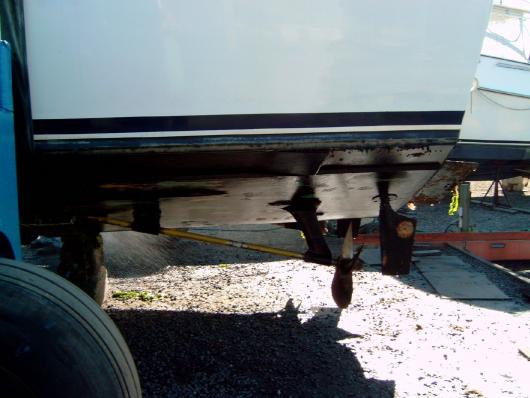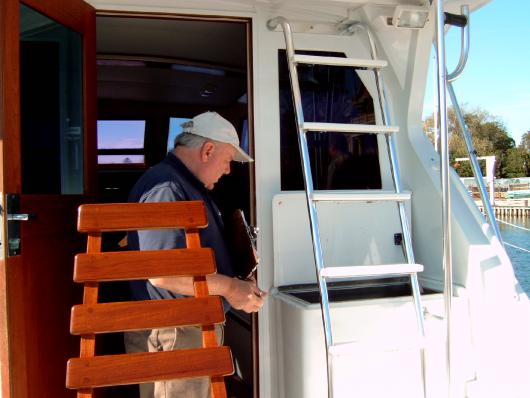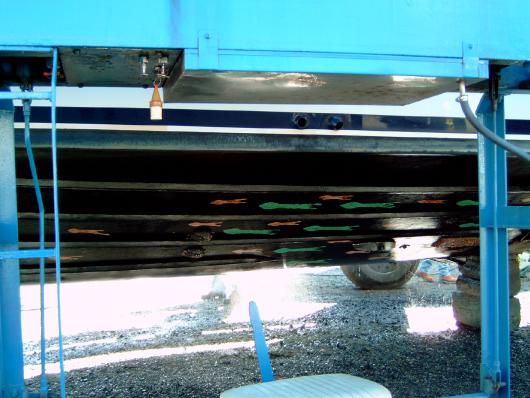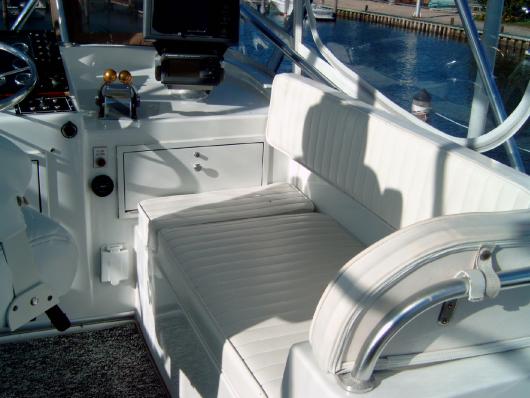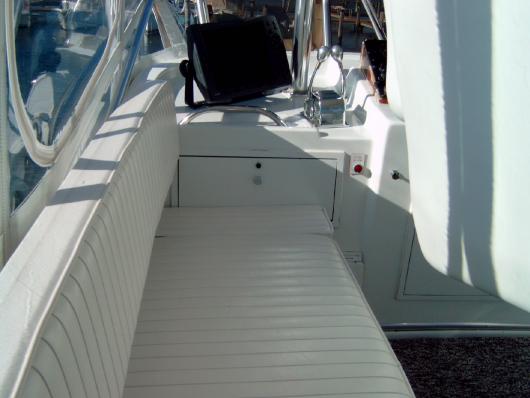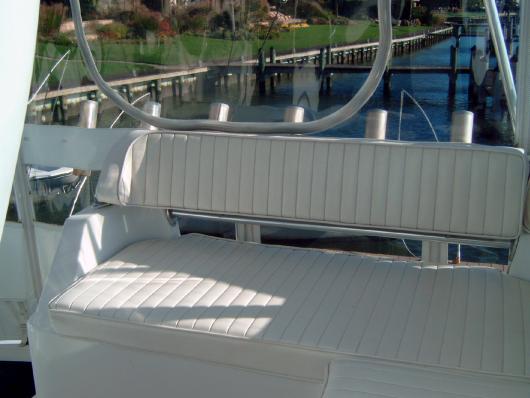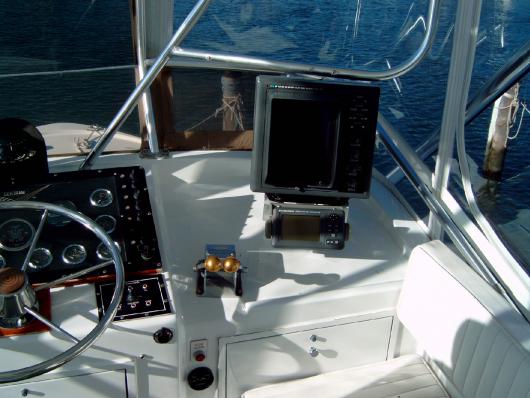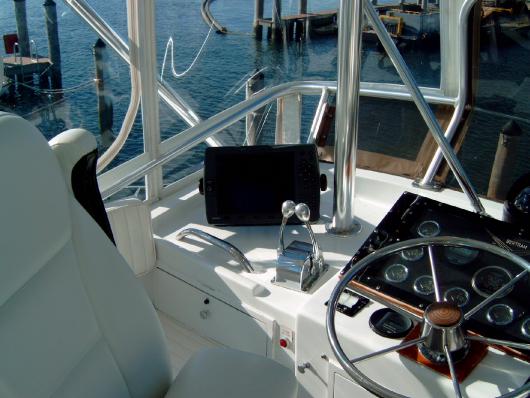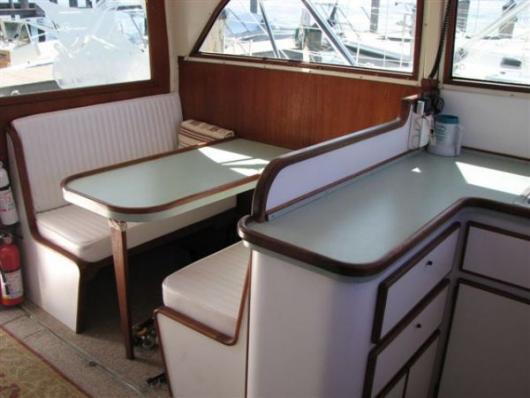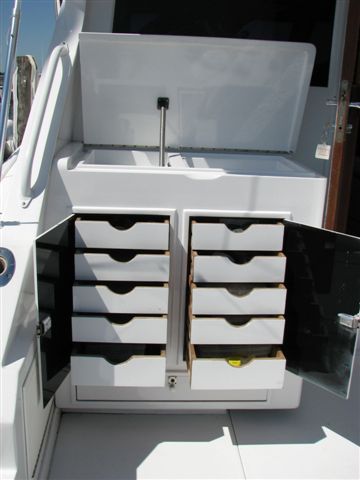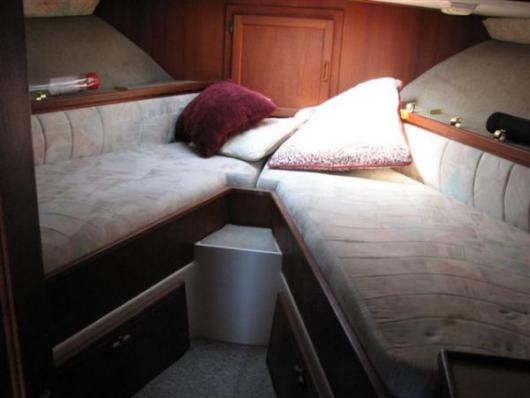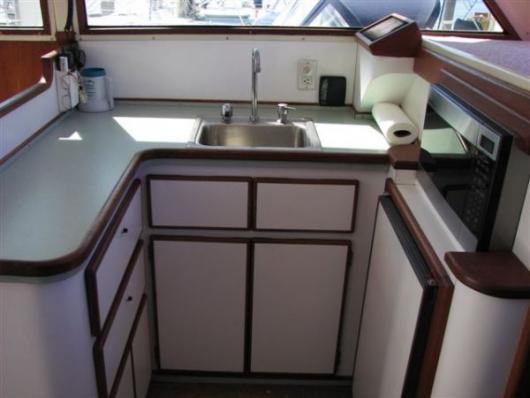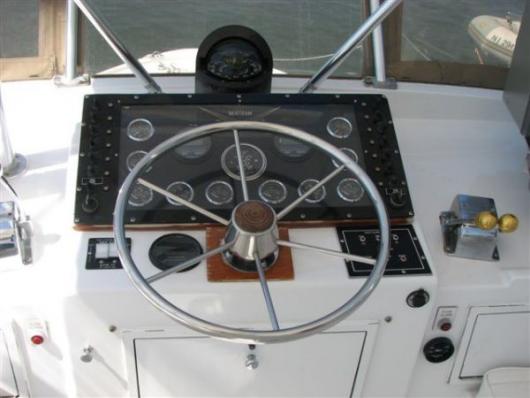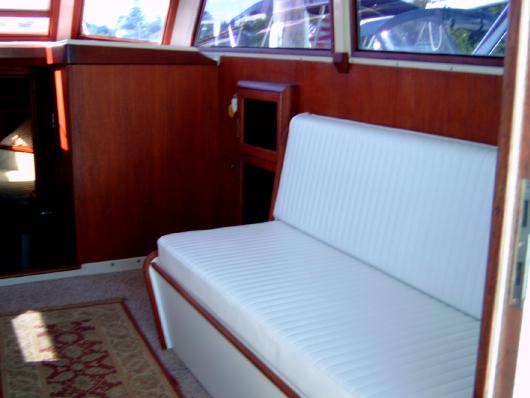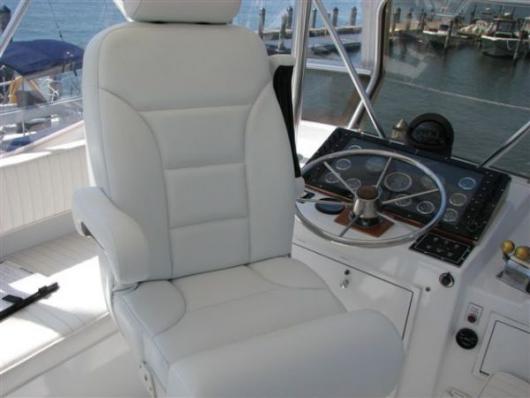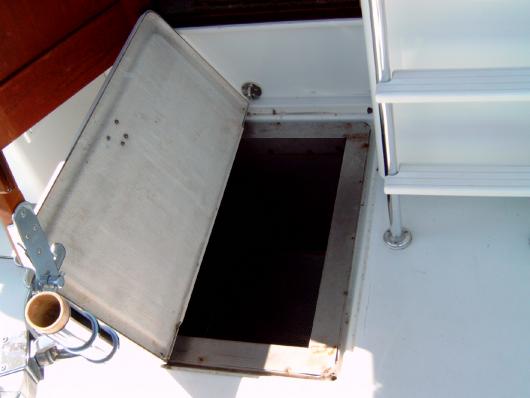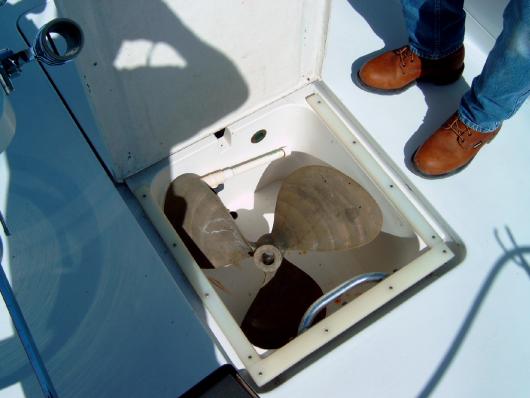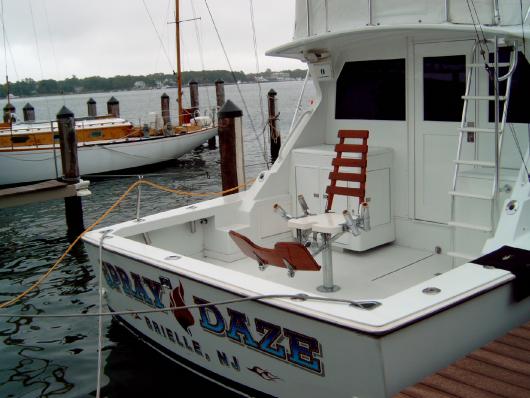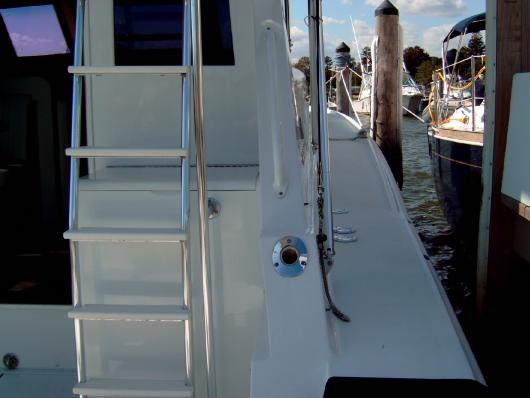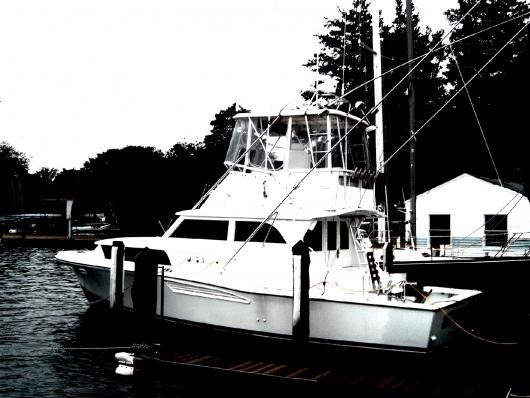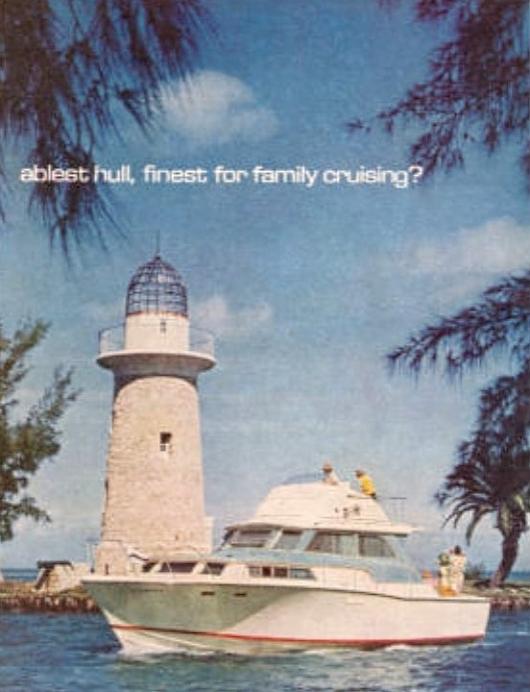 |
Welcome to the Reel Boating Forum.
From Trailer Boaters to Captains to Marine Industry Professionals, the Reel Boating Forum welcomes you to join in with other boaters and fishermen discussing topics including sportfishing, marine electronics, boating safety, boat engines and more. Use our FREE boat classifieds to sell your boat or fishing gear. Marine Industry Vendors are also welcome to register a username and freely post their products or services |

Fubar512
Registered-
Posts
99 -
Joined
-
Last visited
Content Type
Profiles
Forums
Events
Everything posted by Fubar512
-
Golf ball dimples on the hull bottom?
Fubar512 replied to ScarabChris's topic in Boating and Fishing Discussion
Golf balls are spheres. They benefit from turbulent airflow, as opposed to laminar airflow: http://wings.avkids.com/Book/Sports/instructor/golf-01.html Also, look up "area rule aerodynamics"......makes for interesting reading, and food for thought. -
Uh Chris, You should know by now that any boat is a never-ending total investment. New, used, or project, they all wind up about the same in the end.
-
LOL....the histories of the USS Nevada (sunk during the Pearl Harbor attack), and the USS Squalus (sunk with all hands while conducting diving trials off New Hampshire in 1939), argue this point. Both vessels were raised, refitted, recommissioned, and went on to distinguish themselves during WW II (the Squalus was renamed the USS Sailfish, the crew, knowing her past, referred to her as the "Squailfish"). The Nevada was used as a target vessel during the Bikini nuke tests, and served as the ground zero vessel. It did not sink: "Nevada then returned to Pearl Harbor after a brief stint of occupation duty in Tokyo Bay. Nevada was surveyed and, at 32⅓ years old, she was deemed too old to be kept in the post-war fleet.[4][56] As a result, she was assigned to be a target ship for the first Bikini atomic experiments (Operation Crossroads) of July 1946 The experiment consisted of detonating two atomic bombs to test their effectiveness against ships.[84] Nevada was designated "ground zero"[85] for the first test, codenamed 'Able', which used an air-dropped weapon; as such, she was painted an "ugly"[86] reddish-orange to help the bombardier's aim. However, even with the high visibility color scheme, the bomb fell about 1,700 yd (1,600 m) off-target, exploding above the light carrier Independence instead.[86] Nevada also survived the second test—'Baker', a detonation some 90 ft (27 m) below the surface of the water — but she was damaged and extremely radioactive.[56] Nevada was then towed to Pearl Harbor and decommissioned on 29 August 1946. After she was thoroughly examined at Pearl Harbor, her final sortie came on 31 July 1948 when Iowa and two other vessels[A 15] used Nevada as a gunnery target for practice.[4][68] The three ships did not sink Nevada, so she was given a coup de grâce with an aerial torpedo hit amidships. Nevada then sank 60[86]–65 mi (97–105 km) southwest of Pearl Harbor." So, judging by this, sinking may actually make a boat better! LOL
-
Consider a survey, a form of cheap insurance, as the dealer may have installed items improperly. The surveyor will alert you to this, and can potentially save your thousands in repairs and aggravation.
-
Those older HydraSports deep Vs are great riding boats. A close friend was looking at several mid-80s 2500WA models to restore, and found that every single one he looked at, needed a transom (this was during the late 90s). The concensus was that this was mostly due to poor rigging on the part of dealers and previous owners, and wasn't a construction issue.
-
Larry, I usually run as many as 5 squid daisey chains at one time...the antics of yellowfin, bluefin, and albacore when they encounter my spread, are almost hilarious to watch.
-
Other than a few barnacles on the rudders, the underside of tabs, and the bonding plates, the bottom was surprsingly clean: An interesting touch, were these two "lifting wedges" molded into the bottom. Trim tabs weren't a common accessory in 1963, and the heavy, low HP diesels and gas engines of the day needed all the help they could get, when it came time to get a 26,000-30,000 lb hull up on plane. Notice how they're placed between the chines and the first set of strakes, and recessed into a slight pocket. This ensures that they are mostly out of the water once the boat is fully up on plane, and the recess creates a low pressure area behind the wedges (like a stepped hull), that draws in air from under the transom, helping to reduce the wetted surface area.
-
Thanks for the heads up, Larry. She passed her sea trial, hull, and equipment survey this morning. Phase 2 (deck and superstructure survey), will be performed this coming Monday. Surveyor (and Bertram specialist) John Spencer on the job, inspecting the Bert's refrigerated bait box: Not much, Boz, other than spending the morning going through the aforementioned survey. Had her pulled to check her hull and running gear, and discovered that someone had waaaay too much free time on their hands when they painted the bottom :
-
-
PART 2 “Oh my God!” exclaimed Billy, as he pointed out a black, triangular fin that was moving slowly through the water, leaving a wake on the flat calm water. “A shark!” The hairs on the back of my neck stood up, until Tommy joined us at the port rail, studied the sashaying dorsal fin, and said, simply “Nah”. The conversation must have carried over the growl of the twin Detroits, and up tp Milt's ear on the bridge, because we felt the Slammer start veering to port, on an interception course with our “shark”. Billy climbed halfway up the varnished bridge ladder to get a better look, when we heard Milt say to us “Come on up topside, boys. You’ll want to see this.” Milt pulled the throttles down to idle as we approached the fish, and the hen took the boat out of gear, allowing the Slammer to coast up alongside. The fish sounded just as we came up on it, but was still visible several feet beneath the surface. It wasn’t a shark. It was huge, about the size of a manhole cover, and about the same shape as one. “That’s an ocean sunfish”, Milt explained. “They’re harmless, and very curious. Watch this..” Milt goosed the throttle on one of the engines while it was out of gear, and the sunfish reacted by gliding right up to the hull. “Get a brush out, Tommy, and give him a scrub….that’s all he wants” Tommy reached out with a deck brush, and proceeded to scrub the sunfish’s back. It soon laid on its side, like some tame, over-sized pet, and seemed to be quite content as Tommy ran the brush across its flanks. I sat there mesmerized, half expecting the strange creature to begin purring like a cat at any moment "That’s enough, Tommy.” Milt said “Time to get a move on.” The Slammer was soon up to speed and back on course. Billy and I just sat there, up on the fly bridge, in quiet contemplation. Milt’s voice soon broke the spell. “That was neat, eh?” There had been a noticeable change in Milt’s demeanor since we’d left the inlet. Billy and I had attempted to join him on the fly bridge, shortly after we’d left the dock, and while we were still navigating through the marina channel, only to be told to stay below, by a gruff and seemingly angry disciple of Captain Bligh. Milt’s voice was softer now, and even his gaze seemed to have lost its tough, steeley glint. It was, at least to my 16 year old way of thinking, an amazing, unexpected, and most welcome, transformation. For the next hour or so, Milt opened up to us, telling us of his experiences at sea. Of typhoons off Okinawa during World War II, to salvage dives off of Manilla after the war, to his early days as a charter skipper, when he relied on nothing more than a stop watch and compass for navigation. “In all that time, I realized that I’d found my calling, found what I did best, and what I truly enjoyed. And that’s being out here” he emphasized, sweeping his arm in an arc across the horizon. “Some will tell you that the sea is cruel, that she takes more than she gives, that she takes away your youth and leaves you broken down and decrepit. The truth is, she can be cruel…but only only in the senese that she reveals her secrets to you piecemeal, a little at a time, and only after you’ve put your time in, have gotten over your fears and your cockiness, and have learned to respect her. I’m 57 years old, and I’m still learningg, each and every day I’m out here. And I hope to God that I never stop learnin’. And” he added “I’ll never stop respecting her, ‘cause she’ll do her damnedest to kill you, if you give her half a chance.” Milt seemed to take a deep breath, as if drawing strength from the salt air, and began consulting the LORAN A, and reconciling its readout against a navigation chart. He plotted our position with a pencil, and called down to Tommy. “Time to get a temperature reading…”
-
'Milt", ran charters out of Point Pleasant Beach from May-October, up until 1981 or so (it was berthed at a marina off Channel Drive). During the Winter months, he ran a 26-foot Pacemaker out of the Florida Keys. His boat (the "Slammer") looked to be a typical, locally made 40 footer, possibly a Johnson Brothers cruiser from the late 1940s or early 1950s. I believe that it was renamed the "Striper", and ran out of Belmar for a couple of seasons.
-
I started typing up the following story, several years ago. While it is a work of fiction, the events are based on some of my true-life experiences. In August 1975, a charter boat fishing out of Barnegat inlet, captured a record blue marlin, within 30 miles of the beach. It had been hooked while the crew was trolling for bluefin tuna, and had allegedly swallowed a hooked skipjack, and somehow became hooked itself. The Sea Monster Ahhh....The Summer of 1975. I was just a few weeks shy of my 17th birthday, and like most teenagers, I thought that I knew it all, thought that nothing could faze me, and felt immortal. It was also the summer of Jaws. And, it was the summer that I did battle with a real live sea monster. Our next door neighbors, the Smiths, kept a Summer home in the town of Bayhead, NJ. They'ed invited me over for a two week vacation every July and August, to keep their son, (and my faithful sidekick), Billy company, while Mr. Smith commuted up to his business in Northern NJ, and Mrs.Smith went shopping, visited friends, or did whatever else she could manage to do to occupy herself during the long Summer days. This summer was no different than the previous ones, that is, except for Billy and I having seen Jaws, at the local cinema. That movie had a profound effect on us. While I'll actually admit to having been just a little uneasy every time I got near the water that summer, (even if it was just the mudflats and lagoons of Barnegat Bay), the part of the movie that really took a hold of me, where the shark-fishing scenes. I'd never really been "Deep Sea" fishing before (that is, out of sight of land), and decided that I wanted to go real bad. Unfortunately, 16 year olds don't usually have the finances to charter a boat, and usually aren't invited along on offshore charters. Billy must have been working on his father all summer, because, one day in early August, Mr. Smith announced that he had chartered a boat to go "Deep Sea fishing" for tuna, and that Billy and I were to accompany him. Hot Damn! Mr. Smith also said that the boat he'd chartered, the Slammer, was the same vessel that he'd booked several times a year with his friends and co-workers, and that they've always had a good day out on the water. He then added that we would enjoy meeting the Slammer's skipper, a seasoned old salt named Milt. Milt turned out to be a crusty character, a salty-looking dude who was probably in his mid-50s, and who’d obviously spent an entire lifetime out on the water. His deeply tanned skin had taken on the appearance of old shoe leather. He had white hair, a closely trimmed white beard, and clear blue bombardier's eyes, that seemed to bore right through you. Billy and I decided right there and then that he'd have made a better "Quint" then Robert Shaw had, any day! His deckhand, Tommy, looked somewhat out of place. He resembled an easy-going, blonde-haired California surfer dude, that was getting over as a mate on a Jersey charter boat. It turned out that Tommy was, in reality, a collage student from Philly, who spent his summers earning his way on Jersey shore charter boats. Milt’s boat was a wooden vessel of lapstrake construction, approximately 40 feet in length, and powered by a pair of 6-71 Detroit Diesels. Judging by her lines, she was probably built just after the second World War. She may have been old by my standards, but she just about sparkled. Every visible metal fitting that adorned her hull and superstructure seemed to have been polished to within an inch of its life. The name "Slammer" was emblazoned in gold leaf across her mirror-like, varnished mahogany transom. Needless to say, she was spotless and ship-shape as we boarded her that morning. She sported an open-backed deck house, a small fly bridge, an old Rockaway fighting chair, and, what were probably the first pair of aluminum out rigger poles ever manufactured. She had a pair of sturdy wooden gin poles mounted to both forward corners of the cockpit. Her electronics "suite" consisted of an ancient Simrad paper recorder, what appeared to be a huge, US Navy surplus LORAN A unit, an old RDF sitting on a chart table in the open deck house, a VHF radio, and the height of luxury, an 8 Track tape deck! Milt commented, as I pointed the tape deck out to Billy. "Yeah, I had Tommy install the damn thing so young fellows like yourself can listen to that garbage that you call music and not get bored. But you know, that crap is killin' your brain cells as you listen to it. You'll all be useless, brain-dead vegetables by the time you're my age. Captain Milt and Mr. Smith conferred for a few minutes, then Mr. Smith went to park his car, and returned quickly. Milt leapt aboard and warmed up the diesels, telling us that it was the last call to use a real toilet before we headed out. Billy and I declined, and settled in for the ride out to the grounds, as Tommy cast off the lines. We were soon clear of the inlet, and on our way offshore. The rising sun shone and burned like molten steel on the plate-glass smooth surface of the ocean, bringing with it the promise of a scorching hot day out on the water. Mr. Smith handed Billy and myself a tube of sunscreen, and told us to put it on, before we burned up. The Slammer was oozing along at its cruising speed of perhaps 12 knots or so, and would, according to Tommy the mate, take almost three hours to get to the grounds, which, I imagine, was probably either the area we call the Star or the Fingers, today. "Think we'll see any sharks out there?" I asked Tommy. "Maybe. You never know what you’ll run into out here. I saw a big tiger shark on the last trip. It must have 11 or 12 feet long. Definitely a man-eater", he added. Almost as soon as we were out of sight of land, Billy and I occupied ourselves by keeping watch for tall, triangular dorsal fins, expecting to see one at any moment. It wasn't long before we actually spotted one... to be continued....
-
-
375 HP Cat 3208s, new in 2007, with apprx. 550 hours on them. As for the "funny looking baitfish", well, you've heard of rudderfish, right? That's one of their hardier cousins, the rare nothern nibral propfish
-
Yes.....
-
The boat met Gus's criteria, which was a boat that was in as close to turn-key as possible, had comfortable accommodations, rode well, had below deck fish boxes, and achieved roughly 1 MPG, or better. With an admittedly dirty bottom, we confirmed that she cruised at just about 20 knots, at a skosh over 23 GPH with the genset running and the A/C on. The day we sea trialed her, the seas were fairly calm, with no more then one-to-two foot swells. I had to all but play play chicken with an inbound B & D 60+ foot sports fisherman, jumping her gnarly bow wave, just to show Gus how a proper deep-V hull handles a head sea. Needless to say, she passed Gus's wake test Gus had told me of sea trial he'd once had, with another manufacturer's 38 foot hull, where even less of a wake resulted in a jarring impact. This boat sports a 22-degree dead rise angle at the transom, something that's practically unheard of in a vessel of her size. Her fish box is a stainless-steel slurry tank, cooled by 4-chill plates. it's capable of chilling sea water down below 32 degrees Fahrenheit, and is roughly 60" beam-wise, by 40" wide, and 40" deep.: She also has two nice-sized live wells under the lazarette hatch: The cockpit is roomy enough for a full-sized chair: The side decks are quite roomy and uncluttered, so tending dock lines should be a breeze: The bridge arrangement is incredibly well laid out, given her vintage, with seating for 4, in addition to the helmsman. Unfortunately, my camera started experiencing issues at that point...but I promise that we'll upload some images of that area, soon. The salon and forward cabin areas were completely remodeled, with an eye towards easy maintenance and comfort, rather than glitz and faux luxury.
-
Chapter 1 - - - Miss-Be-Haven II
Fubar512 replied to auguste's topic in Boating and Fishing Discussion
-
Chapter 1 - - - Miss-Be-Haven II
Fubar512 replied to auguste's topic in Boating and Fishing Discussion
As Oliver Laurel would say to Stan Hardy; "Well, that's another fine mess you've gotten us into" -
Chapter 1 - - - Miss-Be-Haven II
Fubar512 replied to auguste's topic in Boating and Fishing Discussion
I've felt a great disturbance in the force......something's up....... -
Intrepid to Debut 40 CC at Ft Lauderdale Boat Show
Fubar512 replied to wiley's topic in Boating and Fishing Discussion
Wow, 40 feet, that's a real beast! As for the largest CC, I recall Salt Shaker once making a one-off 50 footer. -
Well, in three more years, she might get an invitation to join the AARP This is what she looks like today.....
-
Well, the basic lines have been preserved.....sort of...... The marine architect (and firm) responsible for this hull, did perform some work for Chris Craft...and Boston Whaler, and Black Watch....to name a few.....
-
Hello, Ladies and Gents....I've not posted here in a few months, though rest assured that I (and another member of this board, who shall remain nameless for the time being) have been up to no darned good Additional posts and photos will follow....I guarantee that they will will certainly be entertaining and informative. Eeeeeeeewwwww.....what's this?
-
If it's the PM 160 or FM 160 model, they were both rated for 70 HP max. A 2-stroke 70 HP mill of '83 vintage went a bit over 225 lbs. A 50 HP mill from back then, scaled in at about 185 or so. My old 180 Mariner CC was rated for 115...it went like hell with a 75, so it must have been a rocket with the extra HP.
-
That's one helluva transformation. Great job!

